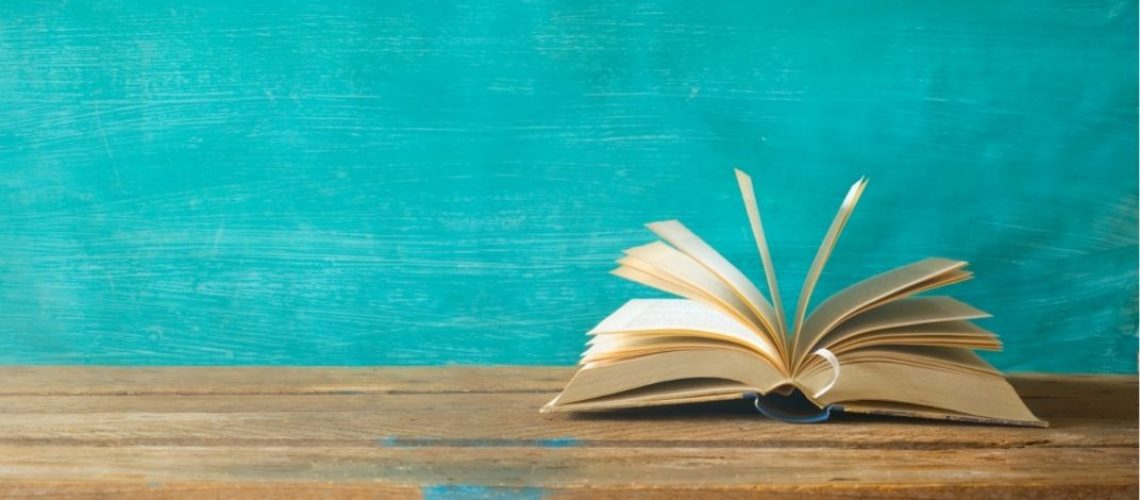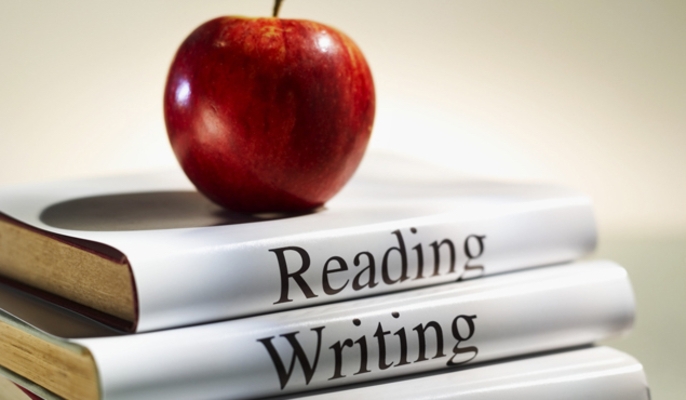Introduction
Welcome to the course "Reading and Writing"! In this introductory section, we aim to familiarize you with the assignments and objectives that lie ahead in this course.

The ability to effectively read and write is essential for success in academic, professional, and personal endeavors. Throughout this course, you will develop and enhance these fundamental skills, enabling you to comprehend complex texts, articulate ideas clearly, and engage critically with various forms of written communication.
Through a series of structured lessons, assignments, and activities, you will explore techniques for active reading, develop strategies for effective writing, and refine your ability to analyze and interpret texts. From understanding the nuances of language to crafting compelling arguments, this course will empower you to become a proficient reader and writer.
Each assignment is carefully designed to scaffold your learning, providing opportunities for practice, feedback, and reflection. As you progress through the course, you will encounter a diverse range of texts, genres, and writing tasks, allowing you to broaden your perspective and deepen your understanding of written communication.
Whether you're a seasoned writer looking to hone your skills or a novice reader seeking to improve your comprehension, this course offers valuable insights and practical tools to support your growth as a literate and engaged member of society.
Get ready to embark on a journey of exploration and discovery as we delve into the world of reading and writing. Let's begin!

Task
Task: Guidelines for Effective Reading and Writing!!!
Objective: To develop skills in effective reading comprehension and writing through practical guidelines and exercises.
Instructions:
-
Start by familiarizing yourself with the provided reading materials on effective reading strategies and writing techniques.
-
Read the guidelines carefully, paying attention to key concepts, tips, and examples presented.
-
Reflect on your current reading and writing habits. Consider areas where you excel and areas where you struggle or wish to improve.
-
Complete the following tasks:
a. Reading Task:
- Select a short article or essay of your choice (preferably within your field of interest or related to a topic you're passionate about).
- Apply the strategies outlined in the guidelines for effective reading comprehension while reading the chosen text.
- Take notes, highlight key points, and annotate the text as you read.
- After completing the reading, summarize the main ideas, identify the author's purpose and tone, and evaluate the effectiveness of your reading approach.
b. Writing Task:
- Choose a topic for a short writing assignment (e.g., a personal reflection, a persuasive argument, a summary of a recent event).
- Refer to the guidelines for effective writing techniques and apply them as you draft your piece.
- Focus on clarity, coherence, organization, and grammar while composing your writing.
- Once you've finished writing, revise and edit your work, paying attention to structure, language use, and overall effectiveness.
-
Submit your completed tasks, including:
- A brief reflection on your experience applying the reading and writing guidelines.
- The annotated text and summary of the reading task.
- The final draft of your writing assignment.
-
Participate in a peer review session, where you'll provide feedback on your classmates' work and receive constructive criticism on your own.
-
Reflect on the feedback received and consider how you can further improve your reading and writing skills moving forward.
Duration: This task is expected to be completed over the course of one to two weeks, depending on the complexity of the reading material chosen and the length of the writing assignment.
Note: Feel free to reach out to the instructor for any clarification or additional guidance throughout the completion of this task. Remember, practice and persistence are key to mastering the art of reading and writing effectively.

Process
-
Review Task Guidelines:
- Read through the task instructions provided by the instructor carefully.
- Understand the objectives, expectations, and the timeline for completion.
-
Gather Reading Materials:
- Select a short article, essay, or any text of interest to work on for the reading task.
- Ensure the chosen text aligns with your preferences or academic interests.
-
Review Reading Guidelines:
- Study the guidelines for effective reading comprehension provided by the instructor.
- Pay attention to strategies such as active reading, note-taking, and summarization techniques.
-
Read and Annotate the Text:
- Engage with the chosen text, employing the strategies learned.
- Take notes, highlight important points, and annotate the text for better comprehension.
- Stay mindful of the author's purpose, main arguments, and any supporting evidence presented.
-
Summarize the Reading:
- After completing the reading, summarize the main ideas and arguments presented in the text.
- Identify the author's tone, purpose, and any persuasive techniques used.
- Evaluate the effectiveness of your reading approach and note any challenges encountered.
-
Select a Writing Topic:
- Choose a topic for the writing assignment, considering personal interests or relevant themes.
- Ensure the topic allows for the application of the writing techniques learned in the guidelines.
-
Review Writing Guidelines:
- Study the guidelines for effective writing provided by the instructor.
- Understand concepts such as clarity, coherence, organization, and grammar.
-
Draft the Writing Assignment:
- Begin drafting your writing assignment, adhering to the guidelines provided.
- Focus on structuring your ideas logically, using appropriate language and tone.
- Pay attention to grammar, punctuation, and sentence structure while composing your piece.
-
Revise and Edit:
- Review and revise your writing draft, ensuring clarity and coherence.
- Edit for grammar, spelling errors, and overall readability.
- Consider seeking feedback from peers or the instructor for additional insights.
-
Reflect and Submit:
- Reflect on your experience applying the reading and writing guidelines.
- Complete the required reflection as outlined in the task instructions.
- Submit all components of the task, including the annotated reading, summary, and final writing assignment, within the specified timeline.
-
Participate in Peer Review:
- Engage in a peer review session, providing constructive feedback on classmates' work.
- Incorporate feedback received into your own writing assignment for further improvement.
-
Reflect on Feedback:
- Reflect on the feedback received from peers and the instructor.
- Consider areas for improvement in both reading comprehension and writing skills.
- Identify strategies or techniques to enhance future reading and writing tasks based on feedback received.
Evaluation

-
Adherence to Task Instructions:
- Assess whether the student followed the provided task guidelines accurately and comprehensively.
-
Reading Comprehension:
- Evaluate the student's ability to comprehend the chosen text.
- Consider the accuracy and depth of their summary, including the identification of main ideas, author's purpose, and tone.
-
Application of Reading Strategies:
- Assess the student's use of effective reading strategies, such as active reading, note-taking, and annotation.
- Evaluate how well they applied these strategies to enhance comprehension and engagement with the text.
-
Writing Skills:
- Evaluate the clarity, coherence, and organization of the student's writing.
- Consider the effectiveness of their argument, if applicable, and the use of supporting evidence or examples.
-
Application of Writing Techniques:
- Assess the student's application of writing techniques as outlined in the guidelines.
- Evaluate their ability to structure sentences and paragraphs effectively, maintain a consistent tone, and adhere to grammar and punctuation rules.
-
Revision and Editing:
- Evaluate the thoroughness of the student's revision and editing process.
- Consider the extent to which they addressed feedback, revised for clarity, and corrected errors in grammar, spelling, and punctuation.
-
Reflection and Self-Assessment:
- Assess the depth and thoughtfulness of the student's reflection on their reading and writing process.
- Consider their ability to identify strengths, weaknesses, and areas for improvement in their own work.
-
Participation in Peer Review:
- Evaluate the student's engagement in the peer review process, including the quality and specificity of feedback provided to classmates.
-
Overall Effectiveness:
- Consider the overall effectiveness of the student's performance in fulfilling the reading and writing task.
- Evaluate their ability to meet the objectives of the assignment and demonstrate growth in reading comprehension and writing skills.
-
Feedback Incorporation:
- Assess the extent to which the student incorporated feedback from peers and the instructor into their final submission.
- Consider whether they demonstrated a willingness to learn and improve based on feedback received.
Conclusion
As we conclude our reading and writing class, it's essential to reflect on the journey we've undertaken together and the progress we've made in honing our skills. Throughout this course, we have embraced the principles of the 4 Cs - Communication, Collaboration, Critical Thinking, and Creativity - as guiding pillars for our learning experience.
First and foremost, we've recognized the importance of effective communication in both reading and writing. We've learned how to articulate our thoughts clearly, structure our ideas logically, and engage with texts in a meaningful way. By mastering the art of communication, we've empowered ourselves to express ourselves with confidence and clarity.
Moreover, our journey has been characterized by collaboration. We've actively participated in peer review sessions, providing constructive feedback to our classmates and receiving valuable insights in return. Through collaboration, we've not only improved our own work but also contributed to the growth and development of our peers.
Critical thinking has been at the heart of our exploration of texts and ideas. We've learned to analyze information critically, evaluate arguments thoughtfully, and discern between fact and opinion. By cultivating our critical thinking skills, we've become more discerning readers and more persuasive writers.
Finally, our journey has been fueled by creativity. We've embraced creativity in our approach to writing, experimenting with different styles, genres, and perspectives. We've discovered the power of imagination in crafting compelling narratives, persuasive arguments, and evocative descriptions.
As we bid farewell to this class, let us carry forward the lessons we've learned and continue to apply the 4 Cs - Communication, Collaboration, Critical Thinking, and Creativity - in all aspects of our academic, professional, and personal lives. May our journey in the world of reading and writing be one of continued growth, exploration, and inspiration.
Thank you for your dedication, enthusiasm, and commitment to learning. Farewell, and best wishes for all your future ahead.
Credits
Credits for "Exploring the World of Reading and Writing"
Instructors:
- Dr. Elizabeth Johnson, Ph.D.
- Prof. Michael Rodriguez, M.A.
Course Development Team:
- Emily White, M.Ed.
- James Anderson, M.A.
- Sarah Thompson, B.A.
Special Thanks: We extend our gratitude to the following individuals and organizations whose contributions enriched this course:
- OpenAI: For providing access to cutting-edge AI technology that enhances learning experiences.
Media Contributors: We are grateful to the creators of the following media resources that were used in this course:
-
Images:
- Unsplash
- Pixabay
- Pexels
-
Videos:
- TED-Ed
- Khan Academy
- CrashCourse
Citation Sources: We acknowledge the following sources for providing valuable data and information used in the course materials:
- Books:
- "How to Read Literature Like a Professor" by Thomas C. Foster
- "The Elements of Style" by William Strunk Jr. and E.B. White
- "On Writing: A Memoir of the Craft" by Stephen King
- Websites:
- Purdue Online Writing Lab (OWL)
- Stanford University's Writing Center
- Harvard University's Writing Resources
Additional Links and Citations: Throughout the course, students were provided with supplementary materials, including articles, research papers, and interactive exercises, sourced from reputable educational platforms and academic databases such as JSTOR, Google Scholar, and ResearchGate.
Note: The inclusion of multimedia resources, such as pictures and videos, aimed to enhance student engagement and facilitate diverse learning experiences. We express our appreciation to the creators of these resources for their valuable contributions to education.
